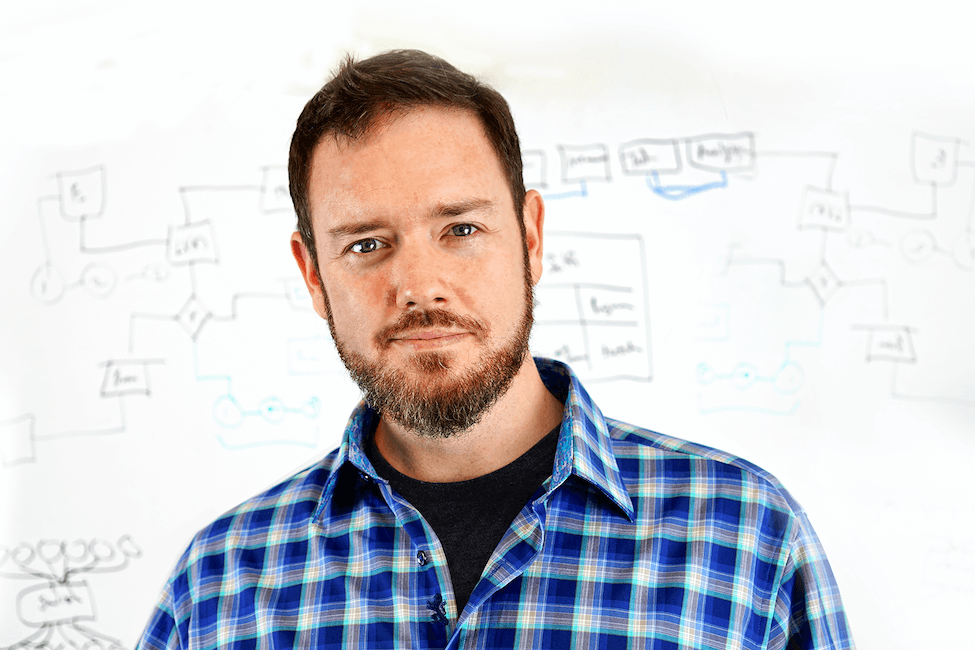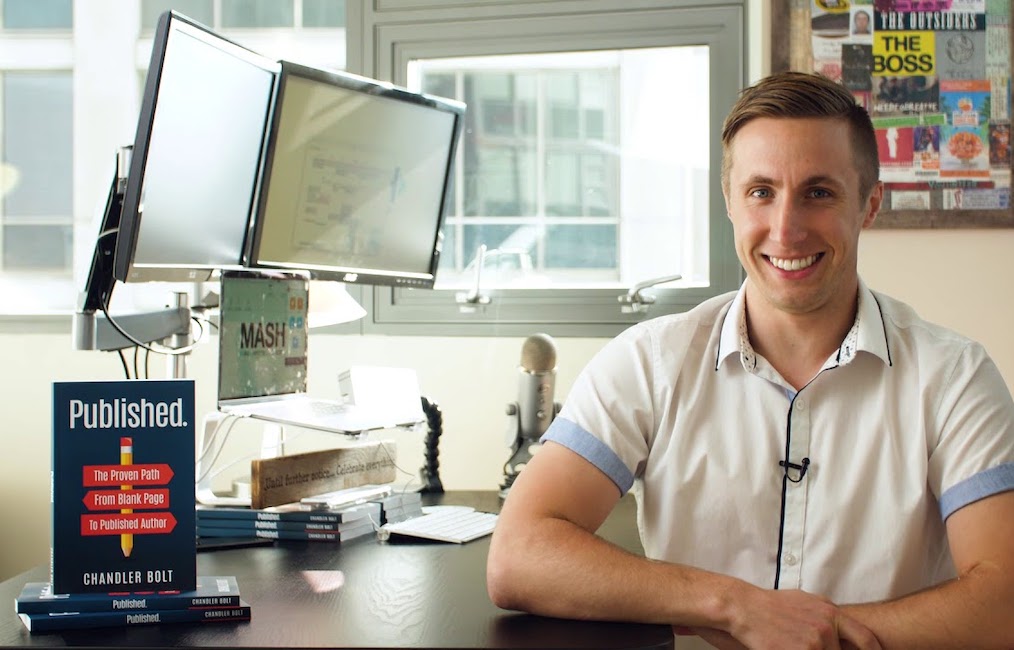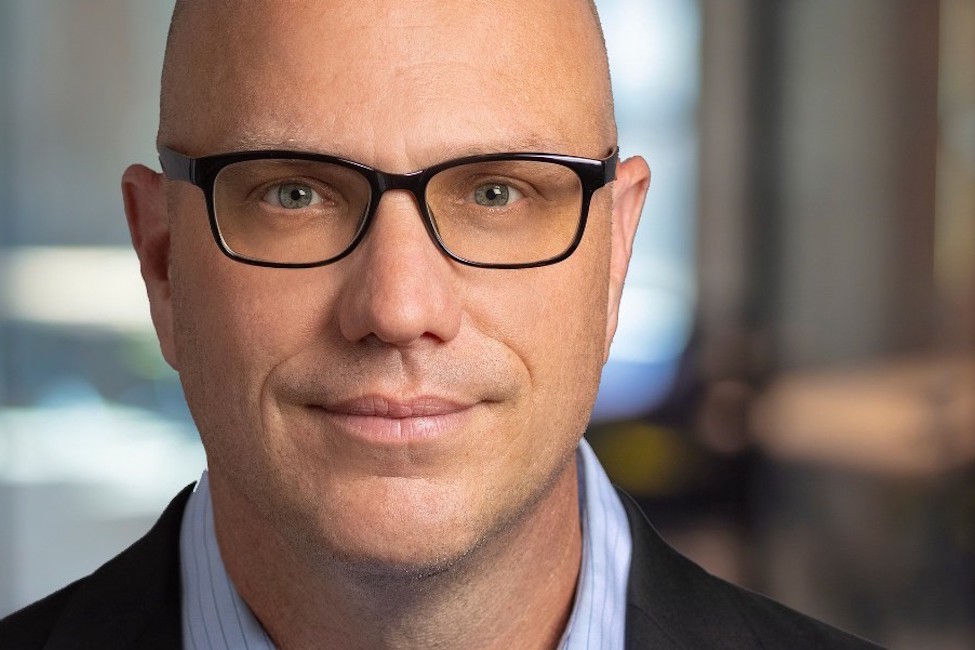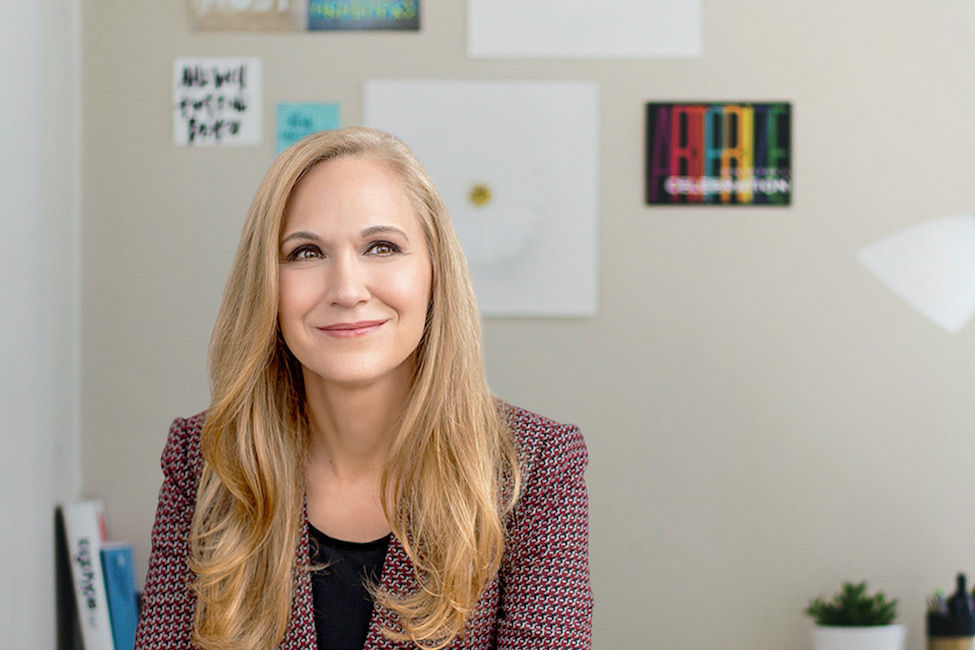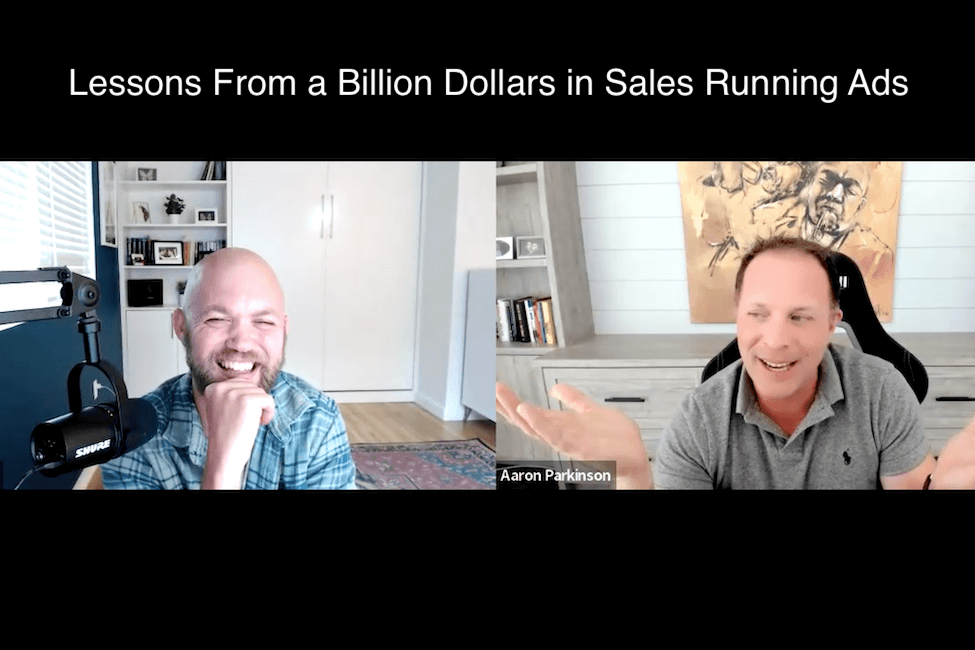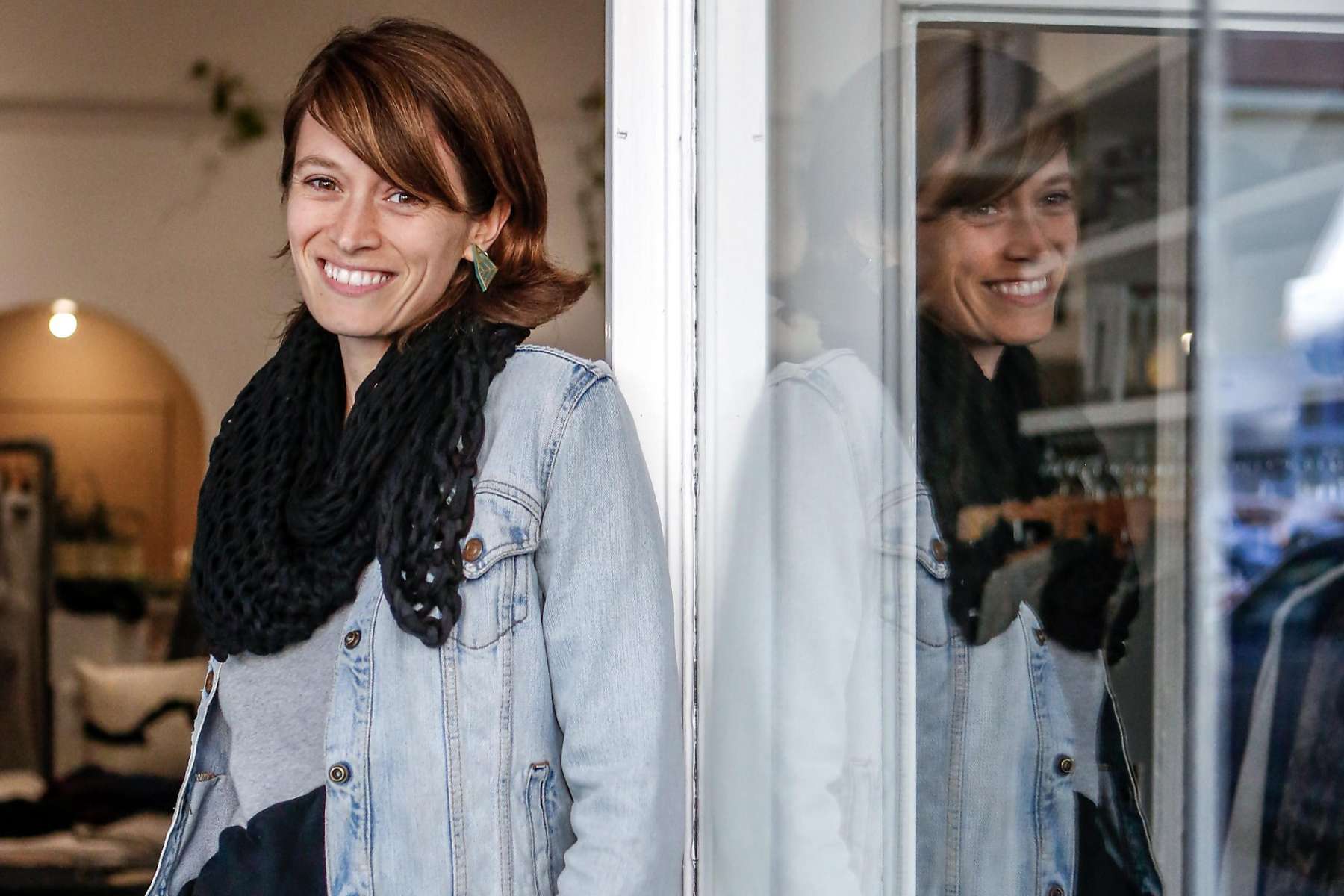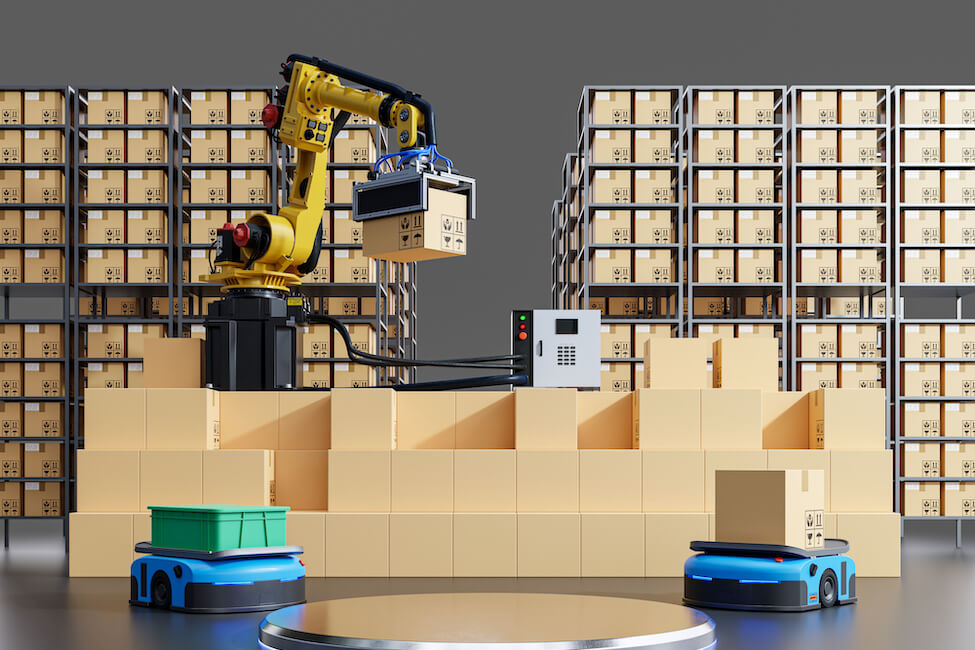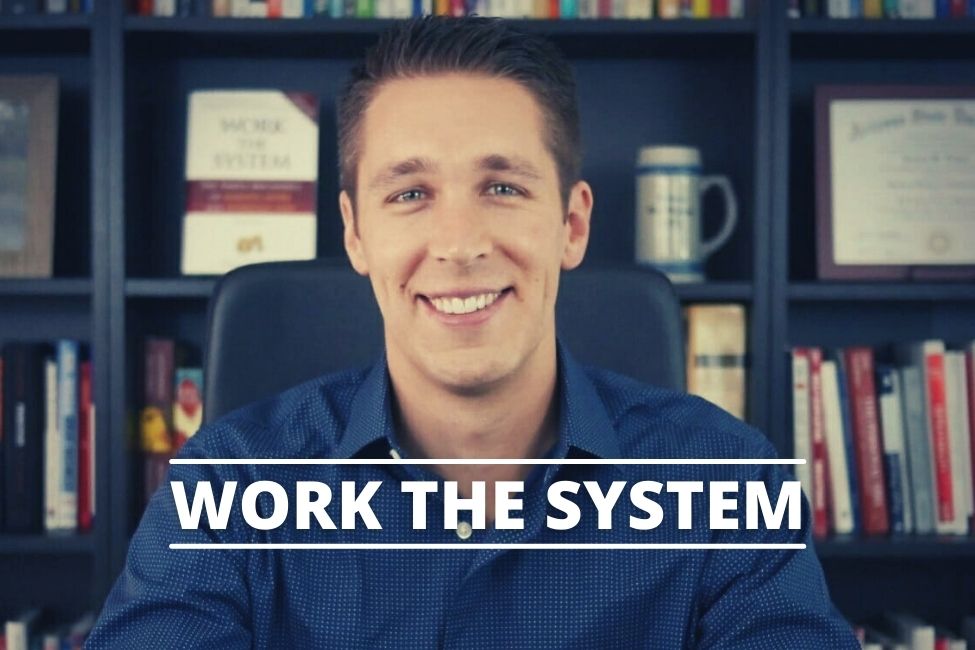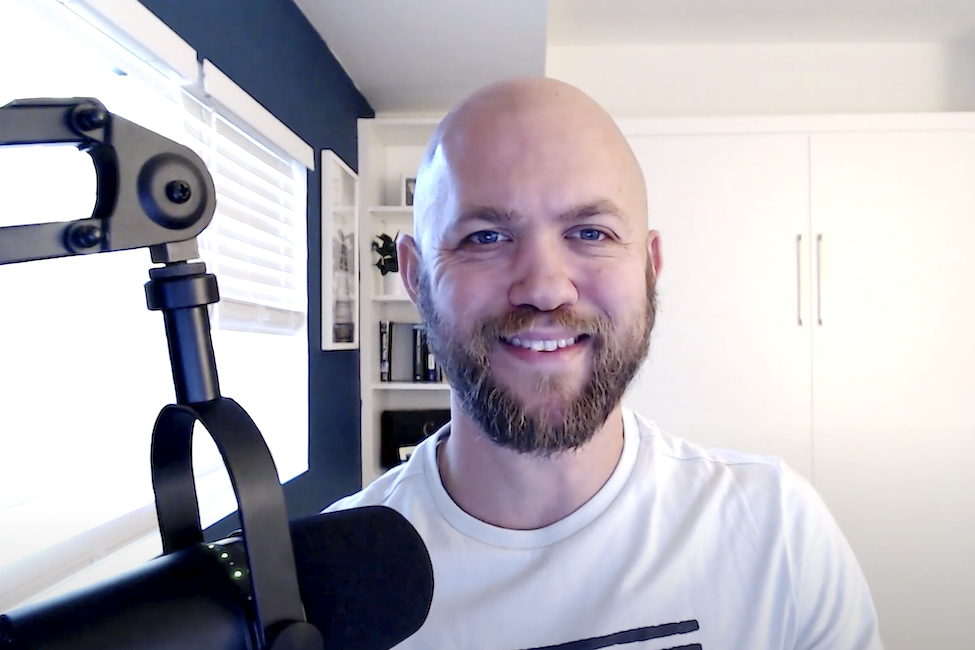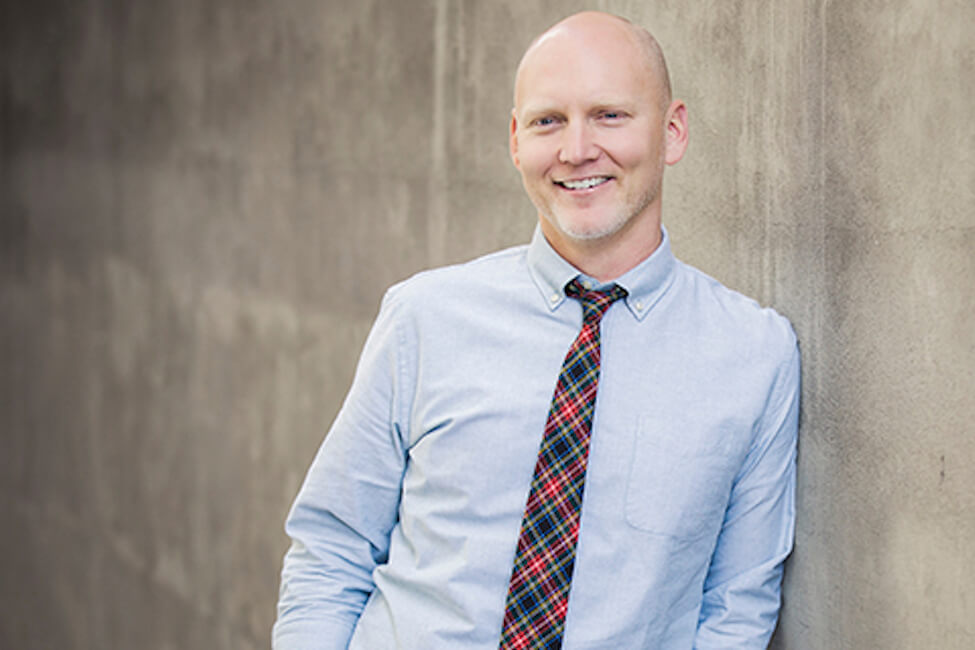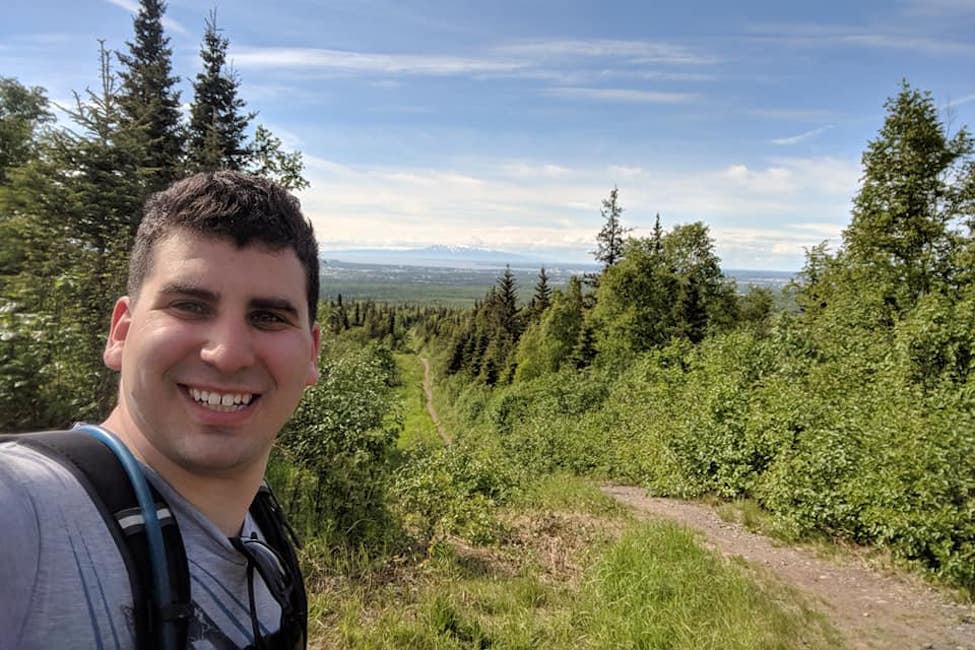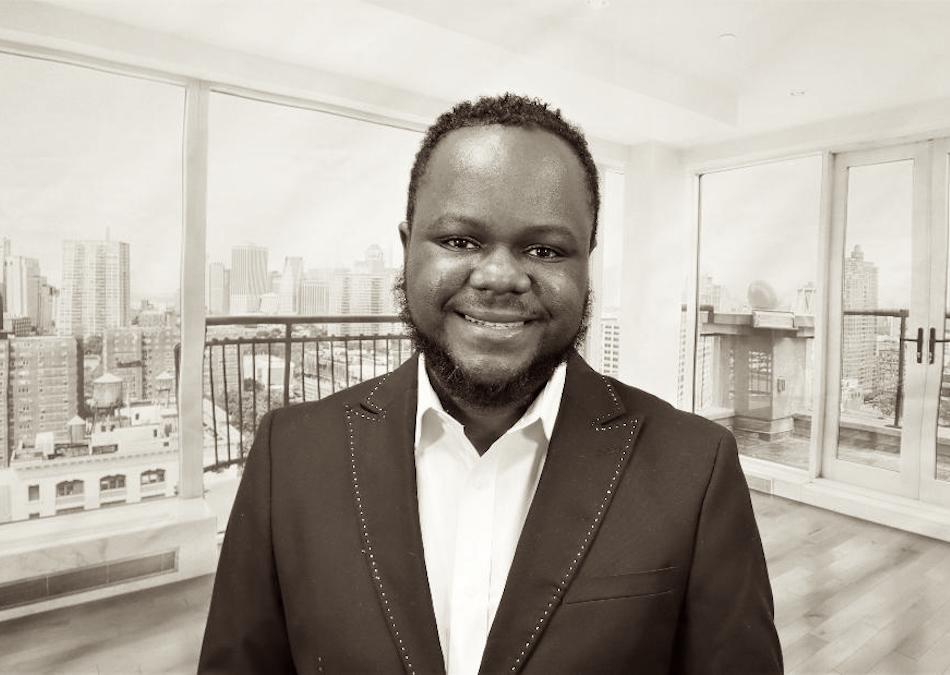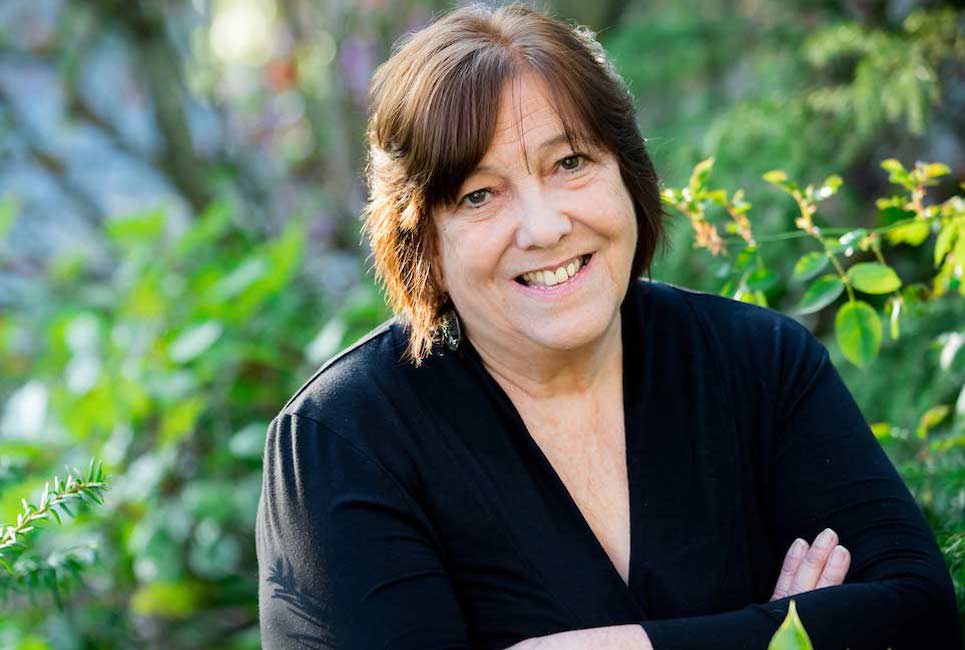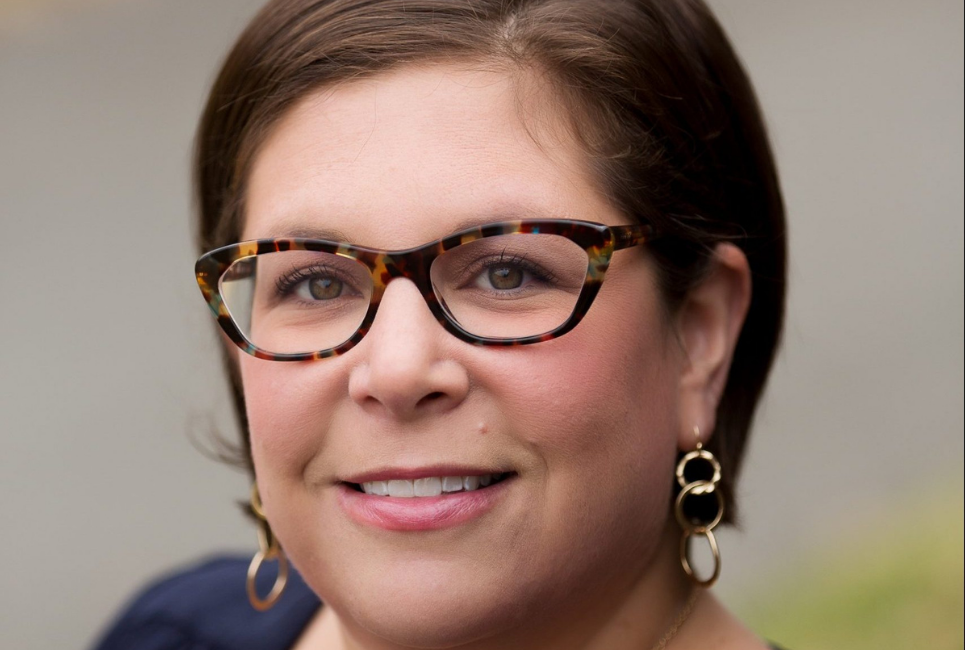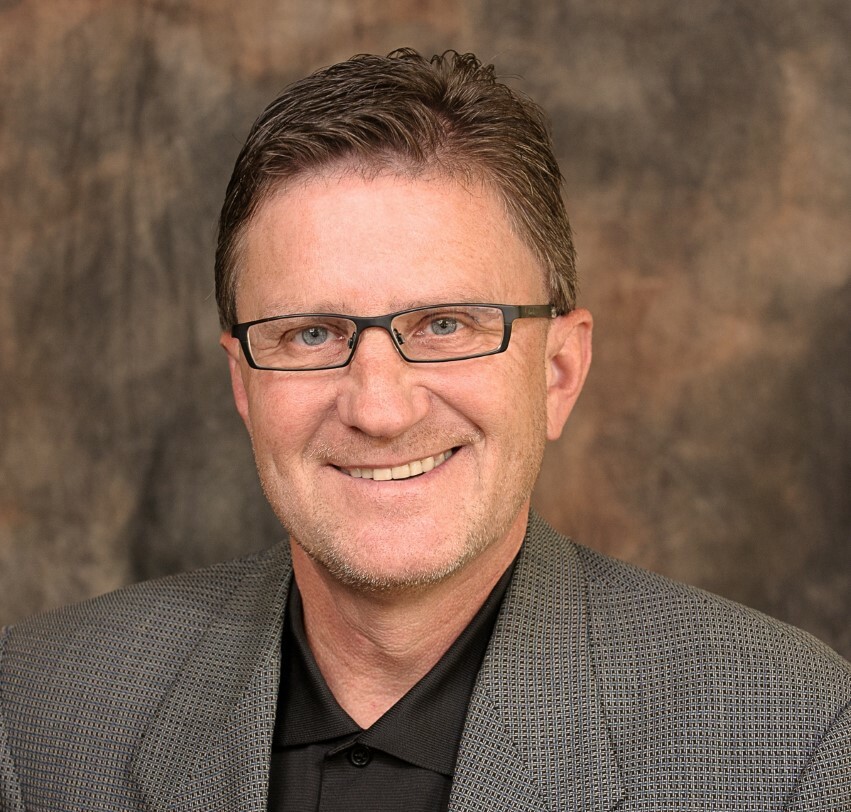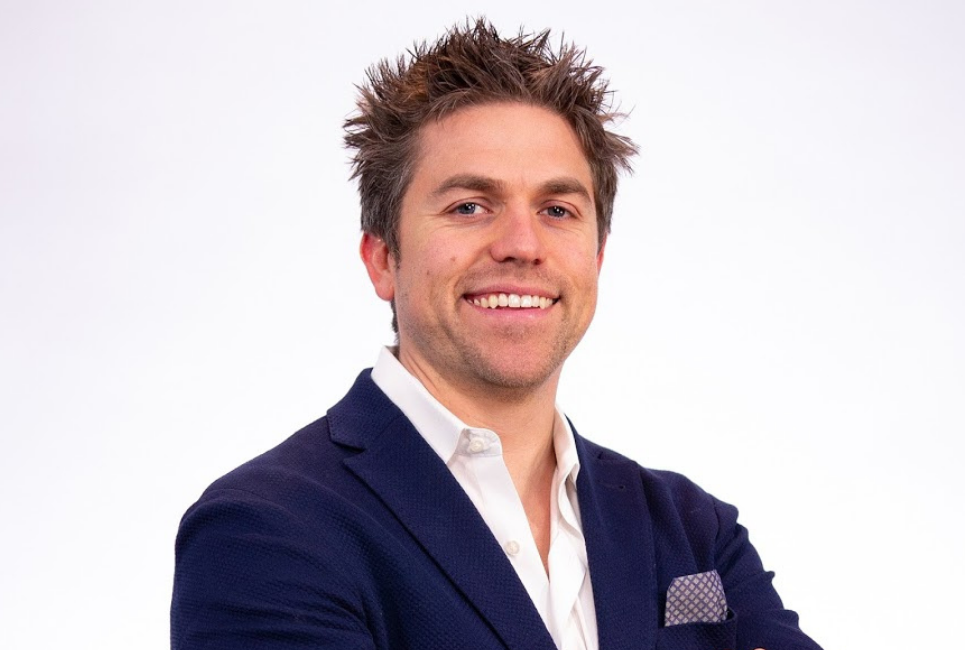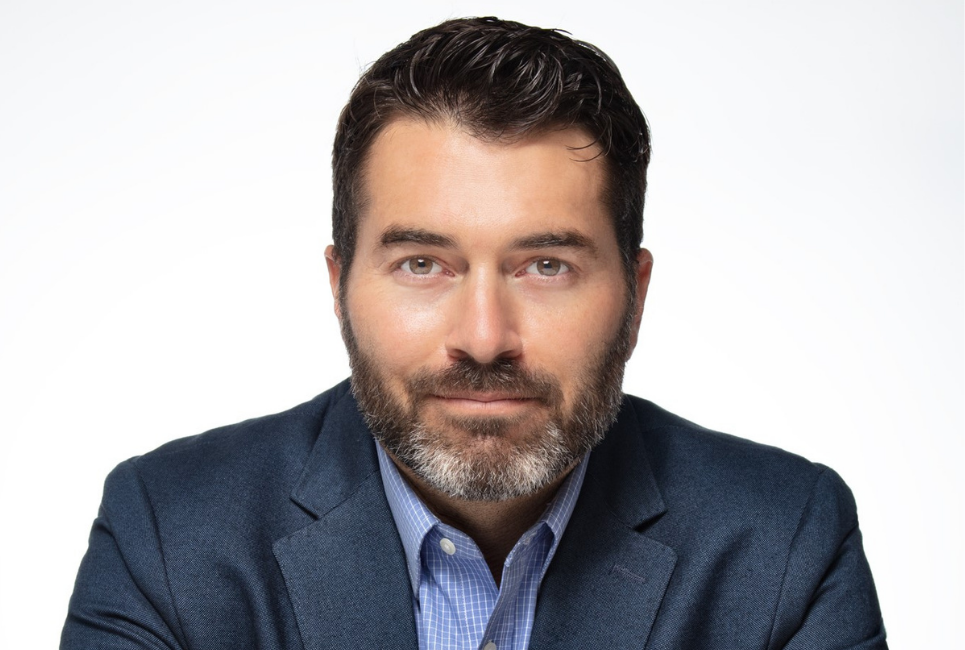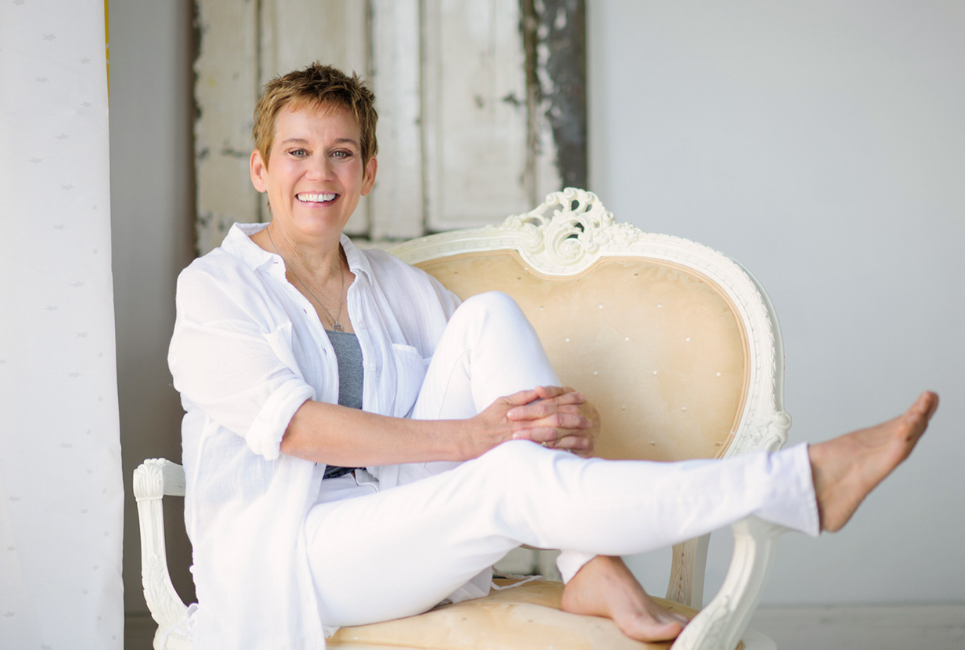Despite spending thousands of dollars on Facebook or Google Ads, not many businesses achieve the best possible results.
Some struggle with their creative part.
Whereas, others are victims of technical errors.
And if you are spending thousands of dollars each month on paid advertising, you may as well do it right.
This brings us to our BIG question:
“What really makes online ads work for your business?”
Throughout this episode, Adam talks with one of the pioneers of the digital marketing industry – Aaron Parkinson who has generated over $1B in sales for his own businesses as well as his clients since 2004.
Aaron’s currently the CEO of 7 Mile Media and lives in the Cayman Islands with his lovely wife and three kids.
Throughout this Episode, Adam & Aaron Discussed:
- Aaron shares:
- His professional experience
- What his company Seven Miles Media Does
- His background in paid advertising and how they have evolved over the years.
- How is it important to build dedicated paid ad campaigns suitable for different platforms you’re running paid ads on? But most importantly, how important it is to make sure that you’re building the best creatives and the best copy for your paid ads that actually catch your prospects’ attention and engages them to the point that they click through and take the desired action?
- The three basic elements of marketing and advertising:
- Get paid
- Get laid
- Live forever
- How to position your product in the market? And it doesn’t matter who your target audience is or what stage of life they’re in, why is it important to consider the three basic elements?
- Aaron explains how important it is to understand the stage of life your target audience is in, their motivations and conversations. How gaining insights into these things can help write a copy and create visuals for your ads that convert?
- When something’s working, how important it is to repeat the process.
- Aaron shares how important it is to build dedicated processes and systems rather than randomly implementing tactics.
- Aaron shares his experience with legends in the digital marketing industry.
- How important it is to spend time thinking about who you’re serving, what they really want, where they’re at in their journey, what’s most important to them, who they like, who they don’t like, who they want to be like, who they don’t want to be like, and based on that create a plan?
- Aaron shares insights into latest trends in today’s advertising industry – how important it is to slow down the process and break down your campaign into at least four different parts? If you don’t, you’ll miss out on 98% of your target audience and will face a hard time scaling your business.
- The importance of storytelling in marketing and advertising. How important it is to put storytelling at the heart of all your marketing and advertising operations?
- How can you assure that your product is any good?
- How brands are mocking other brands in their space and achieving great results – advertising taken to a whole new level.
- Adam shares a lesson from Ryan Holiday’s book “The Perennial Seller.”
Conclusion
Advertising is not complicated. The one reason why people and businesses struggle with their advertising efforts and end up wasting their top dollars is a lack of strategic planning and implementation.
Aaron shared some valuable insights – which have personally helped me level up my advertising efforts.
We hope you loved the episode.
And if you did love it, tune in to our podcast each week where we share valuable insights to help business owners and professionals take their marketing and advertising efforts to the next level.
Want to Generate High-Quality Leads?
Book a call to chat with Adam at: https://studio.changecreator.com
Subscribe HERE:
READ MORE:
Episode Transcript (unedited, will likely have typos):
Adam G. Force 0:00
How do social entrepreneurs and small businesses create an authentic brand people love so they can get the edge they need to stand out, create Predictable Revenue and compete against the big guys. That’s what we’re here to discuss. I’m Adam forest, the founder of change creator, and this is the authentic brand mastery podcast.
What’s going on everybody, welcome back to the show. This is your host, Adam force. Very excited this week, because I’m bringing on somebody who’s been really helpful in my, my world, when it comes to change creator. And he will be hopefully helpful in your world as well. He’s one of my mentors, and has been kind of guiding me on the advertising path helped me understand some really key things, especially in the Facebook space. He’s CEO of seven mile media, they manage, I think, and he’ll explain this when we get going on the chat. But I think it’s like $10 million a month in ad spend, and have had incredible results working with a lot of incredible people. So his name is Aaron Parkinson, and he’s just got this wealth of knowledge, you know, just how are we? What do we need to be thinking about? Like, what are the real nuts and bolts of actually making ads work? Right, so we’re gonna get into all that today. And I think it’s gonna be a really helpful conversation for you guys. If you guys are, you know, right now we are taking on some more ecommerce brands, I actually made a new hire. And we’re expanding because we we filled our roster. And so what’s been happening is, we’re kind of slowly like, we like to make sure our quality, we get the right people, the right team, all that kind of stuff. So we’re slowly kind of dipping, tipping or dipping our toe in the water, if you will, with some bringing on some extra clients more than we usually would. So if you have a brand in the E commerce space, and maybe you’re running ads, but you’re struggling, they’re not converting the big bottleneck is usually what happens after they actually the ads are successful, they’re getting traffic, but now we have to actually make sales. Right? So you want to really elevate your game in, you know, adopting a lot of emails, selling more on the back end selling more on the front end, we need to fine tune the website, we need to create sales funnels, those types of things. And that’s where we help you master your brand, we help you really tie in how to position your products in the market, how to talk to the right customers, and actually get conversions we do everything for you that done for you. So sales, copy, development, design all of that and bring your brand to life. But we really are backing the whole development process with the through the lens of a a marketer, right? Because that’s what we are over here at change creator, we are marketers, and we want to get your results. So yeah, just go to change creator.com You guys can go ahead and book a call, we’ll chat if you are looking for support in that space. That’s it for now, guys, if you are loving the show, and you want to give us a little bit of love, it goes a long way to just leave a review on iTunes. And with that being said, we’re gonna dive into this conversation with Aaron and hopefully you guys love Hey, show me the heat on the Aaron What’s up, buddy? Welcome to the authentic brand mastery podcast. How you doing today?
Aaron Parkinson 3:21
I’m doing amazing. Thanks for having me
Adam G. Force 3:22
on the show. Yeah, man, awesome to have you and talk a little bit more in depth because you are a man full of knowledge and experience. And I know because everybody listening if you didn’t catch the show the description notes and everything. Aaron is somebody that helped mentor me on Facebook ads, and I just found his insights so valuable that I wanted to bring him on here to share the love, if you will. Aaron why you just tell everybody a little bit in a nutshell, kind of like, you know what you got going on today? Like what’s what’s in the present moment and how you got there? Like what what’s the deal?
Aaron Parkinson 3:56
Sure, yeah, well, I’m currently the CEO of seven mile media. We’re primarily a digital marketing agency, we will occasionally take E commerce if it’s what I call a holy shit product, which is something that stops me right in my tracks. You know, but primarily, we’re a digital marketing info marketing company. We handle, you know, 50 of the world’s largest authority brands. And I live down in the Cayman Islands. My team is spread out all over the world. Everybody’s completely remote. I started as a one man show five years ago and kept adding team members now we’re a team of 50 You know, full stack tech team, creative team, copywriters, media buyers, account managers, the whole shebang. And I actually got started the digital marketing space in 2004. Before there was even Google Pay Per Click so I’ve actually been doing, you know, pay per click marketing longer than Google, which my kids think is pretty funny. And, you know, in that timeframe, I’ve I’ve built an exited three of my own brands. And that’s, you know, what kind of brought me to this place is one of my friends said what you should do is help all your friends with their stuff and just do what you did with yours for them. And I said that sounds fun. Right? So started the agency as it was a one man consultant. And now, it’s like a real business, which is real. It’s a real business, or at least other people think it’s a real business. Some days, I’d debate that, but
Adam G. Force 5:24
yeah, yeah, it’s interesting. And I, I love hearing that. And I want to get into some of your thoughts on just trends. Sure. And I hear, I’ve had people, there’s like, to two modes of thought that have come to me when it comes to advertising one. You know, people are afraid to advertise, obviously, because you’re spending money and all that stuff. But I feel like if you have a validated offer, you know, there’s a pretty good chance you can figure it out. But I feel like when you’re running ads, people will say, well, it’s not working on Facebook, but I’m gonna go to tick tock, and I’m like, that’s not really gonna matter. And so to me, it’s, and Cole hit this too. It’s another person in our circle, Aaron, and I know. And he was like, it doesn’t matter. He’s like, if you can’t sell it on Facebook, then there’s something wrong with the offer, most likely, and it’s not gonna matter. If you put it on tick tock or YouTube, it’s still not gonna sell, you might just get more reach at a lower cost, right? Sure, your money will work harder for you. But if you’re not selling in one place, so is that is that where your head is that too, when it comes to these different platforms? Because you’re across the scope?
Aaron Parkinson 6:31
Yeah, I mean, we mark it on Facebook, Instagram, tick tock, YouTube, Google ad, roll all the Pay Per Click search engines, right. And what I will say is, I would say that it’s the majority of what you’re saying is true. What I will say is that you can’t take the same style of how you sell your thing. Yep. And expect it to work on all the other channels the same way. Because they’re almost like going to different countries, right? Like, yeah, you know, you’re not going to have Greek food and in the United States is not Greek food. In Greece, right? Same with Italian food, right? So when you try to go these different places, and you think it’s just going to work, it’s not, you know, tick tock is much shorter, much snappier. It’s a whole, it’s a whole community of people, I feel like add, like, you have to be like, super fast, and like super quick cuts. And like all over the place where like YouTube is, is more of an older audiences. And they’re there to consume and learn. So you can go into sort of longer explanations of things. And Facebook and Instagram are disruptive. So you kind of got to grab their attention quick, and then bring them through this education piece. And so they’re different in how you have to display what you have. But if what you have sucks, you’re still not going to make it. Right? And so when people ask me, like, how, how do I market my stuff, like, I Oh, marketing is very basic, because humans are very basic. What we want is in this hierarchy, that goes down in levels of priority, right? And the hierarchy starts with basically like three basic elements, which are get paid, get laid, leave live forever, right? Those are the three things at the top of the chain that everybody wants, at like a genetically wired in level, I want to get paid when to get laid, and I want to live forever, okay, and then everything else kind of falls below those in like, subcategories, right? So like live forever, is like when I start getting into like the nutrition, the health, the exercise, the fitness, the philosophy, the insurance, the like, all of these things, right? Get Paid is like, Well, is it the careers? Right? Is it education, traditional education, non traditional education, career job search, entrepreneurialism? And then there’s like sub tiers below each one, right? And the closer you can gravitate your marketing up towards the top tier elements, the easier it is to sell them on something, right? And I would say there’s like, there isn’t no people say, Well, what about status? Like there’s so many status products, right? People want status, because they feel like it’s going to get them paid for leads. So status is like, below both of those, right? So they all tend to just fall under those top three tiers and the closer you can get to them, the easier it is to sell in the wider audience you’re gonna have
Adam G. Force 9:45
all right, I think we’re gonna have a lot of people running ads want to get laid.
Aaron Parkinson 9:52
And it’s funny like you don’t want to say that but the reality is like why is Why is fashion so Like so important, right? It’s status, what status gonna give me? Well, it’s gonna get me paid, or it’s gonna get me laid, right? Like, it all ends up back going to the same stuff, right? So when you’re doing your marketing, you’ve got to weave that psychology, yes, from those three top tiers into what you’re talking about.
Adam G. Force 10:18
And that’s the thing like I, for years, I’ve been doing the business thing for 20 years now. And it’s always like, I, before I matured as an entrepreneur, at least to where I am now still have a long way to go. I have always found that no matter what product I was trying to position in the market, it always came down to the same kind of psychology, it’s about the money, it’s about, you know, it’s always because I’m in business. So it always it’s just about the money. And you know, it’s like, you can’t really escape that. So what you’re saying is spot on, but it’s, how are you positioning your product to get people to understand that that’s where it’s going, right? So that it actually resonates with a key? Well, what part of where they are in their life. You know, I mean, I mean, the two things like we’re doing sales funnels over here for people, and I’m like, my deepest conversations are about who exactly we’re talking to what their life is like, and then what the product is, and how it’s actually being positioned in the market and to them, right, like, where do you fit in into their world? And the better we can get those two pieces connected. I mean, it just clicks, you know what I mean? And money comes in,
Aaron Parkinson 11:26
right? And people want those sort of core three things in different ways for different times for different reasons. Right? So what what you’re talking about, you know, is understanding your avatar, right, because I’m talking to, you know, a 55 year old, you know, male, right? His primary focus really isn’t at that point about, get paid, get laid, it’s about live forever, right? And then underneath that, it’s like live forever, happily. Right. So that’s where you can kind of get into the light makes you happy, right? What makes you happy. And then you can keep going in, like, look, not just live forever, but be happy. And then it’s like, well, what makes you happy? Well fit well, a good relationship with my family, well, you know, the ability to travel the like, they all just keep going down in sub tears. So so these are like the big tears. And then you have to understand your audience to see where and why they want that thing that’s underneath those elements. And once you can connect those together, and you can get inside that the conversation that’s already happening in their own head. Yeah. Now you win.
Adam G. Force 12:37
That’s the key. And that’s where we go from red ocean to blue ocean, right? So you’re starting with the big red ocean, but you got to know that’s where you’re at. So maybe it’s live forever, because you got the older Gen. And you dial it into that blue ocean like that. And that’s where like, I literally will go through and create stories for people, oh, well, you got this guy, John, he’s a husband, he’s got kids, he’s pretty stressed out already. Because we already got the stress factor. You know, every morning that ended and, you know, I’m talking to a client. Now this one’s for you Giovanni, where we’re selling like motorcycle parts and accessories. And we’re really dying, and like, I just can’t get, I want my weekends back. You know, I want to get out on the road, I want a little solo time. And if that doesn’t happen, well, what’s the stress factor behind that what happens? You know, like, you start and you feel it slipping away, that’s stressful when your passion hobby, like slips away, you know? So you really get into that psychology. So when someone is scrolling through mindlessly on Facebook, it catches their attention and it clicks, right?
Aaron Parkinson 13:37
Well, and we can say like, you go through those tears, not that I want to focus on that the entire time, right. But your ideal client in that space is somebody, somebody between the get laid live forever, categories, right? They’re like, I used to be this guy. And when I was this guy, that’s what that’s what got me late, right. And so that was my cool guy character. And then I had to go through the evolution of most males, right to like, become responsible, I had to make money, settle down, I had to have kids, I had to raise them, do them right, become responsible, etc, etc, etc. And now I’m kind of exiting that phase. And I want the like, the old me back, right? How do I get the old meat back? How do I get back to like the rebel, the whatever, and have my weekends back and ride my motorcycle and be free because now I’m going into the live forever stage. But I want to live forever, like, the way that makes me happy with the vision that I have of who I am or who I was in my own head. Today, right? So when you understand that, that psychology of where are they at right now? And what are their what are their passions and their motivations and maybe what they feel they’ve lost or what they want to gain back or like, once you really get into that conversation, you can start to write, copy or create visuals or serve them a product. But if you took that same product to a 30 One year old female, right? Living in LA, she’d be like, What the hell are you telling me doesn’t fit at all in the narrative? where she’s at right now?
Adam G. Force 15:10
That’s right. And that I find that that’s one of the hardest business processes for people to master. Really understanding the positioning and the customer and getting into that story, because, you know, you hear it all the time got to know your customer. And everyone’s like, yeah, no, of course, I don’t know my customer. And they just have this generic understanding of it. But they’re not really, it’s because I have you ever had those moments? Aaron, where it’s like, you’re like reading or you hear someone talk about it, and you’re like, Oh, I get it, I understand. But then like a year goes by and someone explains it again, like the same thing, but differently. And you’re like, I knew that. But wait a minute. Now I see what you’re saying even more clearly, it’s like, you have evolutionary thought processes on the same idea that get more and more clarity. And I’ve seen that for me just as a strategist, and branding and stuff like that, because I’ve gone through so many conversations with clients, where you just get better at like, understanding what works. And the more you run the ads, and the more you make sales and get on the phone and sell deals, you start learning what’s actually making that stuff work, you know, and I’m just literally,
Aaron Parkinson 16:17
it’s not just, it’s not just the deeper understanding of the principle, it’s also the repetition, yes, of doing it, hearing it or seeing it, you got to do it multiple times. And for those people that that and I’m sure you’ve watched it before, there was a guy I worked with for about a year, his name is Simon Sinek, he wrote a book called start with y, which is one of the best TED talks I’ve ever seen. And for those people that don’t understand what we’re talking about, you know, he’s got this, go watch it. First off, but he’s got this quote in there, where he says Your goal is not to do business with everybody. Your goal is to do business with people who believe what you believe. Yeah. And when you can understand that, then you win. That’s knowing your customer, right? Who believe what you believe. Right? Because not everybody believes what you believe. And if you actually keep it too broad. Yeah, then it lands with nobody and it resonates with nobody. Yeah, right. And a lot of people are like too afraid to niche down and only market to people who believe what they believe and polarise everybody else. Yeah. But that’s the difference between building a raving tribal customer base. Right? Yeah. We’re not having any success at all,
Adam G. Force 17:32
not having any success at all. I mean, that’s exactly it. I had someone recently on my team that helped me out with the podcast and stuff he’s like, I understand the idea of nurturing leads, but how do you get leads, and honestly, so I did a solo talk, like on the podcast, and I was just like talking about ideas like this. Because whenever I think about that, there’s lots of tactical ways to get leads, where you’re trading value for an email or whatever. But it really my mind always comes back to this conversation we’re having you want to get leads, you got to know this information, the better you know, this, then the better the carrot you can make. So people want to skip all this strategy stuff and just get into the what ebook do I make? And do I? Am I going into Facebook groups and DMing people? Like do I run ads? Like, you’re not quite there yet? Right?
Aaron Parkinson 18:18
Those are just tactics. Right? So that’s just tactics. That’s not strategies, right. And, you know, I have two different companies where we put both of our clients through onboarding situations. One is the agency and another one is a software I have where we have some done for you services that, you know, we’ll build them funnels and integrations and back ends and all that stuff, but I’m sure you have something similar. Yeah. Right. And the very first module they have to go through is a deep dive in understanding the core things that motivate their customers a, who are your customers, what motivates them, what keeps them up at night? What, what concerns they have about the future, like all these things, and people go through and they like, cause so much work? Why do I have to do all of this, right? This took me like five hours, and so many of them I’ve talked to and then when we’re done, they’re like, bro, that was the single most powerful thing I’ve ever done. Because honestly, I didn’t have any idea who I was actually trying to serve. Just trying to sell to who anybody who wants to buy.
Adam G. Force 19:14
That’s it. Yeah, exactly. Happens all the time happened.
Aaron Parkinson 19:17
Yeah, it’s crazy. And the more that you can get zoned in and understand that process, the easier it comes like the the return on adspend. And all those things. Just become a joke. The more you get that down, then
Adam G. Force 19:30
it gets better. Yeah, no, and that’s I forget who said this to me. They’re like, I don’t know if it was you. Maybe I don’t even remember, but they’re like 95% Maybe it was Sam ovens. Actually, it’s like 95% of your success on Facebook. With your strategy is off. Is preparation off Facebook.
Aaron Parkinson 19:50
He is 100% Correct. In that assumption. I’ve never actually met Sam. I bought an agency and merged it with me. That was owned by a guy named Jason Hornung. I don’t know if you know, Jay So,
Adam G. Force 20:00
I know I mean, I don’t know Jason, but I know Jason because I know through Facebook ads he I think he did like Dillards ads. Maybe
Aaron Parkinson 20:07
Mike’s he did Neil Patel’s. Yeah. Sam ovens, Sam still has them in the course. He did. Dan locks, he did a whole bunch of people, traffic and funnels? Yeah. Yeah, he’s a phenomenal, phenomenal Facebook marketer, and he wanted to go more into the courses area again, and courses and consulting. So we worked together for a while, and then I bought this team and merged in with mine, okay, and so on and so forth. And he’s an absolute, like ruthless believer in that, which is probably maybe why Sam reiterates it, because Jason really is the one who helped push them through the,
Adam G. Force 20:45
that’s saying that, yeah, he’s like, this guy, Jason is just like, one of the best like, ever. And
Aaron Parkinson 20:50
yeah, he really is. And, and he, and he will not, he spends 90% of that will settle conversation, like, you sharpen the axe, you know, for 90% of the time before you cut the tree down. Right. And so many people, like kids sort of put my credit card in and set up my campaign, and my rails and thing, and I’m gonna put an image in there, and like, money’s gonna fall from the sky, right? Like, it’s just gonna happen, right? And you’ve spent no time thinking about who you’re serving, what they really want, where they’re at, in their journey, what’s most important to them, you know, who they like, who they don’t like, who they want to be like, who they don’t want to be like, and then you start to craft that together and create your plan. And then all of a sudden, all the dominoes fall.
Adam G. Force 21:33
That’s it, man. That’s it. So yeah, I think this is powerful stuff. I hope everybody listening is really just, we’re hammering this, because it’s so important, right? Like, you know, it’s just becomes the conversation. And as you get more success, you’re going to turn around and when you have it, it’s gonna be because you finally got really clear on these ideas, you know what I mean? And then it becomes the conversation, you’re like, Oh, my God, well, I made, you know, 50 grand this month, but and it’s all everybody I tell now, it’s gonna be this conversation, this is what’s going to come up is how we prepare and strategize and know our customers and all that stuff. So, but let’s give people well, let’s change the the angle here a little bit. And talk, you know, Okay, everyone, we’ve mastered our customers now. And we know how to position in the market great. Where I mean, when we think about leads versus sales. I, you know, when people ask me questions around that, I have a hard time separating the two, honestly, you know what I mean? So, because I never want to generate a lead without the sale in mind. Right? It’s just like, it’s just, you’re just getting people at an earlier point in the purchasing timeline. Right. Sure. So what are some of the things that you’re seeing today? Let’s talk I don’t want to, I don’t want to make this put a time on this conversation. But just for shits and giggles, like, what are we seeing today that’s working? Let’s just use Facebook tick tock for lead generation that is actually meaningful to the bottom line, like you work with a lot of clients are doing a lot of things. So what what anything stand out to you, Aaron today? Trend wise?
Aaron Parkinson 23:16
I think that that what we’re really trying to get through our clients heads right now. Is that let’s talk about Facebook, for example. Right? Yeah. Five to seven years ago, the costs were so low. Yeah, in Facebook and Instagram. They were like, what tick tock is today. Right. Right. So you could almost just throw anything up. And it was going to be successful? Yeah, right. And there was far less competitors. There was far less noise. You know, like I said, everything was cheaper. So now, it kind of circles back around into a what we were just talking about, and be slowing down your process. So you know, when it’s that expensive, and I’m going to sort of reference back to the Start With Why think you’ve seen the law of diffusion of innovation, right? Yeah. Right. So in the law of diffusion of innovation, it shows that there’s certain percentages of the population that will buy your stuff. So let’s imagine that here’s your 100% of people that will buy your stuff, right. But they’re carved into segments, the early adopters, late adopters, early majority, late majority, laggards, etc. And each one of these sectors won’t buy until they see the sector before them buy. They’re all like lemmings to the the one before, right? Yeah. And what most marketers do in any channel, but it’s very common in Facebook and Instagram as well, is they just go in for the kill on day one. And that works, but it only works for one and a half to two and a half percent of the total 100% Yeah, that you could sell to, right? So the end result of that is that guys will come in, they’ll go right for the kill, they’ll make some sales. And then they’ll try to scale. And they tap out the one and a half and two half percent very, very quickly. Yeah. And then all their costs go up, they start freaking out, right? They start trying to adjust to and they’re like, how come I can’t scale? And it’s because they were only speaking to the people who just got it that day. Right. So what I mean about slowing down the process is, you can still go for the kill, right? Audience right message, right? pain point, right? Solution? Bang, no problem. You’ll make sales, one and a half to two half percent. Right. But you got to be thinking about, when am I going to start servicing the other 98%? Yeah. The other 98% need to see a lot of stuff over and over and over again, to break down the resistance, including that other people have done it before them. Yeah. Which is why we’re constantly encouraging our clients to think about basically breaking down their campaigns into, you know, no less than four areas, right? One is your awareness, where you’re literally saturating the audience with who you are, what you do, why you exist, who you serve, value, value value, right? And then the second section is like people who are aware and bonding with them at a at a closer level, right? Like, what is your origin story? What are your philosophies on business in life, like, and it could be you or it could be your company, right? Yeah, getting getting to see case studies and testimonials and stuff from customers in the past again, because other people have to see it happen first, right, and then having a section for the people who just get it, which is like the offer, right? And then making sure that you’ve got really robust retargeting happening for those people that got distracted in their buying process, or they need more from you and getting into the minds of getting into the minds of those people of why they didn’t move forward, like, what is their big objection? What big benefit did they not catch in your presentation that we need to reiterate. And I’ll give you an example of the retargeting side, we had this very famous weight loss expert that worked for with us for two plus years. And we grew up from about 300,000, a year to 10 million a year. And she had this challenge she was running every 30 days. Right? So weight loss challenge, you know, pretty basic stuff. And we made her survey her customer list and ask them, What was the number one fear that you had about moving forward? Yeah. And the biggest response we got was that people thought they were going to have to eat rabbit food. Right? So we looked back at the funnel, and we were like, That’s pretty clear that we don’t have to do that. But it’s still stuck in their head. So we just got her to shoot a video that said something along the lines of, hey, like, I see, you’re on my side. And you didn’t join the challenge. Let me tell you about the number one thing people are worried about changing. When they get in my friend, they’re worried that I’m gonna make them eat this. And she showed like a big thing of kale, right? What we’re actually going to change and she got a piece of paper and like this, boom, and it said, zero, she’s like, I don’t focus on food, I focus on your fitness, I focus on your hydration, I focus on your hormones, I focus on this, this this this. So if you didn’t get started, because you’re worried about this, it’s not an issue, jump on and get started, we’d have 14 to one return on adspend on that. Nice, right. But most people won’t break down their campaigns, and talk to people who are unaware. Talk to people who are aware, talk to people who are hot and bothered and ready to buy and talk to people who say they were interested in buying, but you didn’t answer a question. Yeah, for them. They just come in, in that straight offer bucket like bone by it.
And like I said, it works. I like that. But it only it only goes to 2% of your total. potential audience. Yeah. Right. It’s expensive. You’re leaving 98% on the table?
Adam G. Force 29:30
Yeah, yeah. Yeah, I mean, that makes total sense. So I mean, that that’s the perfect explanation and example of understanding, you know, the lead generation process so you can have that direct to sale right. And the lead gen is really expanding your to different audience segments who aren’t quite there yet, but you do need your strategy with your content and your ads to align to their needs. So It’s a totally different strategy in most cases, right?
Aaron Parkinson 30:02
You gotta meet them where they’re at, got, you know, they’re not in that buying motion yet.
Adam G. Force 30:08
Now they’re curious, you know, interested, they might even be considering something like you have absolutely they need more from you. And you know, the colder, the further away they are from consideration if they’re not even problem aware, then you have a lot more work you have a lot a lot that could be months before they buy, you know what I mean, especially still have a tonne
Aaron Parkinson 30:28
more work. But I’ll give you an example. We have a client that we started working with four years ago, that was doing about 2 million a year. And he flew down to came in and met with me and I walked him through this process and said, This is what we’re going to do, we’re going to build you as the authority in the space, which is we got to do all of these things consistently over time. And in the first six months, you’re probably not going to see much out of it. Right? And he was like, It’s okay, like, I want to play the big game. So okay, if you wanna play the big game, this is how we’re going to do it. And a year later, things really started to pop for him. And now we’re four years in, and he’s doing four and a half million dollars a month in revenue, by just duplicating the same stuff over and over and over again, right. But the first six months were painful, because it didn’t, it didn’t have that immediate, like instant gratification attached to it, he was still making the 2% sales, which was good. And they were kind of creeping up got some cash flow, at least there’s some cash flow, but like talking to the unaware, talking to the aware, chipping away at their resistance over time, and allowing the natural progression to happen. Have lots of customers coming in, and then people seeing him and then people seeing other customers and all those other things that compounds over time, like a bank account, but most people don’t have the time, the patience, the money, the desire to do it the right way. I mean, look at look at Jeffree Star, you know, Jeffree Star is? Thanks so not so Jeffree Star is a I don’t know if he’s transgender or not, but he’s a he’s a guy that used to do makeup tutorials on YouTube, on himself. So he’s a really, really talented makeup artist. And he was doing makeup tutorials on himself and trends and basically transitioning himself from a male to a female, like in before and after pictures. absolutely unbelievable. Artists, like if he’s looking to stuff, you’d be like, Whoa, right. Okay, he did YouTube tutorials, I think for somewhere between three and four years to build his following, right? Pretty much sold nothing for three to four years. And he built his following. And then he launched Jeffree Star Cosmetics about four years ago. And he literally broke Shopify, I know, because I was doing about 70,000 a day in sales on Shopify, and my stuff stopped working like didn’t, they just weren’t working, nothing was working. Right. And it was because he did his launch. And he did something like $40 million in the first three weeks on his launch. And then he sold to some parent company like L’Oreal or something like that for like 200 million or 300 million, like six months later, yeah, retirement. He like he just he paid his dues, of feeding the audience, creating the audience, nurturing the audience. And I’m not saying you have to start. And wait four years before you sell something like Gary Vaynerchuk, who did that for five years before he sold his book and became an instant bestseller. You don’t have to do that. But you can’t just be all in on the one and a half percent of your offer. Here’s my product, you like it, buy it? Right, you can just be all in at least you have to be thinking I’m going to do these things in the background to create the longevity.
Adam G. Force 33:58
Yeah, I mean, and do you see it this way for service businesses? And for E commerce? Absolutely. So, you know, like we do certain sales funnels and stuff in E commerce. And normally somebody has some pretty good brand awareness out there already. They’re making sales, we know like what’s hot and stuff like that. And, you know, we make really great offer data that you know, I never I don’t get much into the extra marketing, you know, around it, you know, if you will, a lot of companies will maybe have that going on, but some of the smaller teams don’t. So as far as ecommerce goes, you know, you guys are running then ads that are going to be kind of just raising the awareness, the education about the products problems that solves and not always the direct sale. Right,
Aaron Parkinson 34:51
then I’ll give you a great example. Like, let me give you great example. Yeah, find out where you’re going. Like tell me like, show me something right. So Ezra Firestone is a friend of mine, you know, as Firestone yeah zipper fi. Yeah, he also owns a brand called Boom by Cindy Joseph, do you know this brand? No. Okay, so he launched this brand, I want to say, it might have been 10 years ago, but I think it kind of only really took off about seven years ago. And it’s a, it’s a skin cream line. Right? Okay. And who the hell cares about another skin cream? Nobody is zero, right? I just met with a client the other day. They’re like, Oh, we did these like, these tests. And we’ve got like, these, these patents, and we’ve got these clinicals. And like, nobody cares. Nobody, because there’s a million skin creams on the planet, right? And so he said, What’s the story we’re going to tell that’s going to break into this, right. And so the story that they told was that women over 50 are told by society that they’re no longer beautiful, they’re ugly. And we don’t believe that we believe that women over the age of 50 are beautiful in their experience. And they’re stunning, and they’re a different phase of their life, and so on and so forth. And he had lead magnets that were tied to this, like five tips, five makeup tips for women over 50. Right, where he was just giving to these, to these, this community and sharing his story inside of that, and giving value and building trust, and then eventually introducing him to the fact that he has this product, but he wasn’t just coming out and being like, here’s my skin cream for women over 50. Like, it lands flat, it doesn’t have anything, right. And then he ended up partnering with Cindy Joseph, which was the world’s or the supermodel at the time. And she was telling, like, they were always publishing, like her stories, like, this is my morning routine. And, you know, this is what I do. These are the types of clothes I wear for my body style this time. And this is, you know, these are the types of foods I eat. And like, all this kind of building this story that got people to, to resonate with the story so that they would feel this, this sense of need of reciprocity to buy the products, right. And so these are the types of things that you have to put in play, to make yourself stand out from really competitive marketplaces.
Adam G. Force 37:12
Yeah, yeah. I love that. And I’m a huge, you know, believer and advocate for storytelling and marketing storytelling is so powerful. I mean, our literally our course Captivate was to learn how to put storytelling at the heart of your marketing. And so you nailed it right there. I mean, you know, Ezras, kind of a mastermind with that stuff. And, you know, I think a big thing that holds people back is is the, the time and the money, right? Because that stuff does take a lot of time and money to build up. You could spend, you know, 50 grand and a blink of an eye trying to build up that awareness, and you know, all that stuff. So, when you’re working with smaller clients, I always take the approach of Yes, like, I, we got to get the story out there, you got to do all that stuff across all these touchpoints. But we also need cash flow. Cash flow system,
Aaron Parkinson 38:01
you either cash flow, or you need somebody to be banking, when you add a whole bunch of cash flow, you can be really patient, right? Yeah.
Adam G. Force 38:08
I mean, I have found that there is like, if you can imagine a tree, there are sales at the bottom of the tree that we can grab now. Yep. Right. And then there’s sales. Yeah, that’s those guys. Right? And then what we’re talking about to have a sustainable and compounding future is getting the ones at the top of the tree, right? Kind of nurturing that and growing and stuff like that. So I always like to dial in to what’s that easy sale, let’s get the cash flow, use that cash flow to build out these other things. Right. So I’ve learned the hard way, dude, because I like was I built change creator six years ago. And it was all about supporting social entrepreneurship, putting a spotlight on entrepreneurs who are doing good things for the world, right environment, people I was in I started a digital magazine. I had people like Richard Branson, Arianna Huffington, Tony Robbins, all cover stories, interviews, like everything that we did. It’s amazing. We were spotlighting people around the world who were doing amazing things. But it didn’t bring us the money we needed. Okay, I thought we were gonna blow up the spot here with all these guys that no one gave? I mean, yes, we got more attention, right. And, you know, we got brand equity is what we got with. And so over time that did develop our brand equity, our brand trust, our story got out there. But what I realised was that kind of overhead, that kind of stuff, you could do the right things at the wrong time. And I was like, the first thing really should have been doing is something that has a lucrative cash flow, like you need the cash flow unless someone else is funding you. Right? So that’s like a real tough place. I see a lot of people who want to just scale and run ads and I’m like, there you may not be there yet. You know what I mean? Like you got to figure out how to actually make money. Like write my message,
Aaron Parkinson 39:57
and that’s a big thing like right there is even validating that anybody wants your thing, right? And maybe you didn’t validate that anybody wanted your thing. You were doing an amazing job at the top part of the equation. Yep. Right. But you didn’t do any validation at the bottom of the validation
Adam G. Force 40:15
was what’s the data say out there? And the data is all bullshit. The data all day long, oh, I’ll spend people 90% of people will spend more for sustainable products. Oh, people care about this with the environment care about that. And then you give them all this stuff? And when it comes down to check out? Oh, well, I’m not gonna spend my money on that.
Aaron Parkinson 40:36
Right? Yeah. My personal needs, all of a sudden just got put way above the environment, or this or that, or whatever. Right? That, you know, you were building something really, really cool. But you were building a really long term play in the same way that Gary Vaynerchuk with his social media, he went almost five years building this massive audience before he launched Jab, Jab, Jab, Right Hook. And the difference is that he had his wine store. Yeah, right. Funding his life. I don’t know when he started VaynerMedia in that whole process, but he had the time, and the patience and the resources to invest long term in building the audience without needing anything in return, which is what you were doing. But you probably were running out of capital,
Adam G. Force 41:24
running out of capital and to be able to do that about running ads for a fucking $15 A year magazine subscription. Right?
Aaron Parkinson 41:31
Exactly. I mean, that one, Mike Dillard is a really good friend of mine. And Mike built this amazing show called self made man. I don’t know if you ever watched it. I have. Yeah. But you know, we were talking you know, we were I was in Austin one time. And I said, How much like, are you? Are you spending on each episode is everything looked amazing? Everything is in studio and this and that? He’s like, Oh, yeah, by the time I do one episode, like 15 grand or something like that. I was like, okay, so you’re dropping 15 grand and episode, like, what are you? What are you getting out of this? Like, where are you retargeting people into some sales and like how, and it was really like this brand play, like he was just building he just wanted to build this brand. And it’s never gonna over time, he might have had enough subscriptions and enough eyeballs and and not like subscribers and enough of those things that somebody might have wanted to absorb that network because there was value in the eyeballs. But that’s a lot of money to sink for a long time to build a Huff Post to build these other things that then you can have advertisers come and give money to you. And there’s you can do those same things in much less expensive ways and sell some stuff along the way. Right?
Adam G. Force 42:39
Awesome stuff along the way. Please, everybody sell some stuff along the way, please sell
Aaron Parkinson 42:44
some stuff along the way. And if you don’t know, and if you don’t know if your stuffs any good, here’s the single best thing you can do. Develop your product, call your 20 closest friends and say to them, Look, I’m thinking about launching this product. I want to give you my pitch and I want your honest opinion if you think the pitch is any good. Right? You give them the pitch. Your friends are all brutally honest. Right? Let me most people are right, they’re gonna tell you math. And when you’re done asking them, then ask them the next question, regardless of what they tell you. Yeah, they would you buy it right now and tell them the price. Yep. And if nobody wants to buy it, you know, your stuff sucks.
Adam G. Force 43:25
Yeah, if people won’t put the money down, you know, and friends and family, sometimes you got to push them to be honest. Because they’ve Oh, no, it’s cool. I like the idea. And you’re I can’t see they liked the idea. So you got to be careful with friends and family. Friends.
Aaron Parkinson 43:38
Will you buy it right now? And if they’re like, no, like, no, it’s no good. Like my, a friend of mine, Ryan Mackenzie. He owns an econ business called wildsnow. Econ business now in regular stores as well. It’s called True Earth. Right? I don’t know if you’ve heard of true earth or not one of the fastest growing companies in Canada right now. And they basically have these disposable laundry strips, you know, like dryer strips, you know, like tide has, like dryer strips that you put in your clothes when? Yeah, right. He did the same thing but with laundry. Okay, because he’s like, look, these bottles are 90% water and they’re clogging up the environment. These big plastic bottles. They’re stupid. Just put this strip in the washing machine like you do over here. And environment saved. Oh, by the way, it’s cheaper than buying that big jug. Yep. Right? There’s less garbage that you have to take out. It’s better for the environment. See, now we’re hitting all the key elements. Because if you just come in and said it’s better for the environment, but it’s five times more. Right? It takes up less space. It’s you get to feel good about yourself. Oh, and guess what? It’s also cheaper. You went from like zero to something like 4 million a month in recurring subscription buyers on this thing and like two and a half years.
Adam G. Force 44:57
loves that subscription model a lot. I mean people are coming in and breaking these things just like Dollar Shave Club came in and one of my favourite recipe razors, but they sold it differently than Gillette, right and made fun of Gillette. And they and they made that video he spent $4,500 on that one video, we all know the video.
Aaron Parkinson 45:17
It was 15 it was 15 You spent on it on that production of that video. 15,000 15,000
Adam G. Force 45:24
I heard in the book I ran they said 40 I could be wrong.
Aaron Parkinson 45:27
I thought it was 15,000. But what’s funny is my buddy is my buddy Brian for one because it makes the story cooler. It makes the story better. Okay, we’ll say you’re right, I’m wrong. But still even 15 grand what are we talking about? If 40 515 Guys just shook up the whole market that shook up the Mark went nuts. And my buddy Ryan did the same thing. Because that’s a Harmon brothers style commercial. Yes. Right. My buddy Ryan did the same thing with true earth he did A a Harmon brothers style commercial. Mocking, you know, the the traditional laundry players. Yeah. And that just like, it went crazy.
Adam G. Force 46:03
It’s it’s, it works. And you don’t even have to directly hit people, you just say the things about how expensive is how it hurts environment. And it’s implied, you know, who I’m talking about out there? Right? You know, and I seeing the intelligence behind that. And you know what, he spent months preparing word for word what that script needs to be, I have no doubt preparation. Preparation, again, was months of just this little two minute, whatever it was video. That’s it. And it took a month to do the script. And then they nailed it down. And that was that took them off to the races. So I think sounds like your buddy did a very similar approach. But every word or statement had a very intentional psychology behind it.
Aaron Parkinson 46:50
100% Yeah. And so many people are in a rush. because either they’re financially pressured, or they’re impatient, or something like they’re in a rush, right. And there’s so many examples of things. I do remember the first Matrix movie, of course, do you remember the scene with Morpheus when they first fight in the dojo? Yeah. Right. And that was like a, like a, like, when that came out. People were like, watch, like freezing in the air and spinning around and that whole thing, and I looked, I was doing some research in one day, and I found it took them 31 days to shoot that one scene. Yeah. Like, think about the investment of time, people. You know, Director staff, whatever we put in iconic though, but it was like, iconic, right? That movie did 1,000,000,005 or something like that? Like, yep, how less power less successful? Is it? If they rush that seat? And they have facet? I don’t know. But my guess is,
Adam G. Force 47:50
it could have not only it would have changed the game because think about the word of mouth that creates and all the the copycats it has created as well. And if you haven’t read the book, I love Ryan holidays books and and if you know Ryan Holiday, amazing. Oh my god, you gotta read the Daily stoic. Stillness is the key. The obstacle is
Aaron Parkinson 48:10
the way really obstacle is the way I feel like I’ve read that one. Absolutely. It’s
Adam G. Force 48:15
all about wisdom from the stoics you know, a long time ago, and it’s just incredible. Basically, the obstacle is way, it’s like the obstacle in the path becomes the path philosophy, right? How to see opportunity and the challenge. But he wrote a book called the perennial seller. Okay, the perennial seller, it is about people who make timeless works of art, based on who they are and what they’re all about. So, when it comes to writing a book, does it go on for 100 years after you die and still stay like a top seller? Right? Like, he wanted to dial into Whoa, what, what how does that happened for people? Like what is it that creates that art, and his way of digging up the research and connecting the dots for you is just brilliant. You know, nothing short of brilliant. So I’m gonna highly recommend the perennial seller.
Aaron Parkinson 49:10
I’m going to read that one for it’s like this one right now. Somebody just my financial manager just started making me read it. And it’s called the psychology of money by Morgan Housel.
Adam G. Force 49:19
It’s in my queue. Dude,
Aaron Parkinson 49:21
it’s so good. I’m like, halfway through. It’s like the best book I’ve read. And like, really? Yeah, in like a year and I’ve got a bunch of stuff I’m always reading and, and that is so good around, like how we are so screwed up about our psychology and our understandings about money and investing and like how it’s all actually behaviour based and not math based. And like, it’s so yeah, it’s so like, it’s sort of it’s sort of like 2 million copies or something like that. And I could see people reading this thing for the next 100 years.
Adam G. Force 49:51
That could be a perennial seller right there. Yeah, absolutely. Yeah. I mean, and that’s, that’s the kind of stuff I love, man. I mean, and that actually That kind of thought process has slowed me down in business to take my time to be more prepared to put in the thought the strategy because there’s no real race, you know, you want to make money. But to your point, I’ve heard you say several times in this call, you have to have patience, right? And when you get into the perennial seller and you get into the psychology of money and start understanding, it’s really how you think and you know, what is actually driving your thought process. I’ll throw another little book out at you because this has been probably one of the biggest game changers for my money psychology. And I’ve probably read it at least 30 to 40 times. I actually listened to it in the book. I listened to it in the car. It’s called oh my god, the name now that I need to say you’ve built
Aaron Parkinson 50:43
it all up.
Adam G. Force 50:45
Really fallen flat here. Oh, yeah, here it is. He’s price. The Science of Getting Rich
Aaron Parkinson 50:56
Science of Getting Rich by Wallace D. Wattles.
Adam G. Force 50:58
Lousy you I mean, I love that book. Dude.
Aaron Parkinson 51:01
It’s such a it’s such a good book. I’m gonna leave people with one.
Adam G. Force 51:05
Tip. Yeah,
Aaron Parkinson 51:06
let’s wrap it up today. Yeah. Is this changed a lot of stuff for me in the late 2000s. Because I’ve been doing this a long, long time. And for like, the whole, like, the whole 2000s. I was just like, how do I sell more stuff? Like, here? I don’t know if it’s good or not good. Because that’s that we’re talking about the phases again, right? Like I was a kid, it doesn’t have any kid, right? I’m just trying to get paid. Right? Like I don’t I don’t care about legacy and any of that stuff, right? Is that is that the end of the 2000s? Somebody said was looking at my stuff. And they asked me, they said, Would you be proud to show this to your mom? And I was like, Oh, well that I heard a little bit. Right? And they said, anytime you put something into the marketplace, ask yourself if you’d be proud to show this to your mom. Now, that could be your product. That could be your marketing. That could be your creative. That can if you show it to her she can be like, son, I am so proud of you. Right. If you can’t answer yes. Yeah. Don’t put it into the marketplace.
Adam G. Force 52:19
Yeah. Yeah, that’s definitely a good way to look at it. My the way I’ve had it positioned is would you want that on the front page of the newspaper?
Aaron Parkinson 52:31
I think that’s that’s almost equally as powerful. Except, like, It’s my mom. Like, I don’t want my son. I’m so unimpressed.
Adam G. Force 52:42
Awesome. Well, it’s been a lot of fun chatting, Aaron, as usual. Appreciate just kind of all the insights and stuff like that. Not getting into all the technicalities of advertising, obviously. But where can people learn more about you, you putting out content? You know, if you’re listening here and you’re making some good money with your your business, I mean, Aaron might be a guy you want to bring on board if you want to look into inchcock Well, I’m
Aaron Parkinson 53:07
really fortunate because I was doing this for so long. So you punch in Aaron Parkinson and Google and I’m like the firsthand I got I got all the URLs I got everything right so I’m really easy to
Adam G. Force 53:17
find him. You will find him. All right. Seven Mile media, Aaron Parkinson. Want to learn more. He’s got all kinds of good stuff out there. Aaron, appreciate your time today, buddy.
Aaron Parkinson 53:27
Thanks for having me on the show and great job and all the work you guys are doing. Appreciate it.
Adam G. Force 53:34
Thanks for tuning into the authentic brand mastery podcast. Don’t forget to stop by change creator.com For more information, fresh articles content and our services if you’re looking to build a brand that people love, and please stop by iTunes, leave us a five star review. We appreciate your support
Transcribed by https://otter.ai



